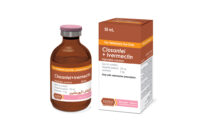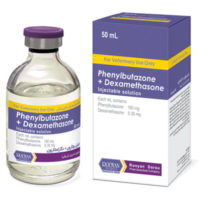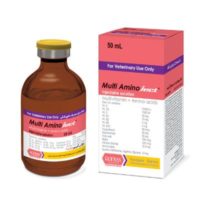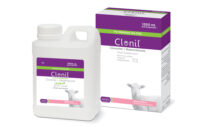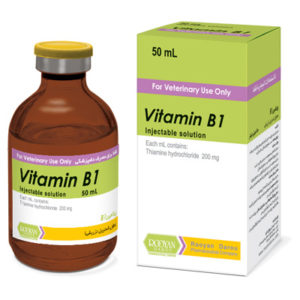
- - animals:
- - type:
- vitamins
- - usage:
- injectable sterile solution
- - manufacturer:
- Rooyan Darou
- - Packaging:
- 50 ml vials
Product properties
Composition
Each ml contains 200 mg thiamine hydrochloride.
Mechanism of Action:
Thiamin (vitamine B1) is a water soluble vitamin that plays an important role as a part of coenzyme in complete oxidation of glucose via krebs cycle. In any situation where carbohydrates are the major energy source, or when glucose is added to the diet, thiamine requirement is increased significantly.
Tissues dependent on glucose or lactate-pyruvate for energy such as the brain and heart are particularly compromised in thiamine deficiency. Thiamine deficiency may be primary, due to deficiency in the diet, or secondary, because of destruction of the vitamin in the diet by thiaminase. The principal cause of thiamine deficiency is the presence of thiamine-destroying agents which are widely distributed in nature, and produced by rumen microflora. Growing sheep are particularly susceptible, and outbreaks of cerebrocortical necrosis have been associated with sulphur in the diet.
Pharmacokinetic:
Thiamine is absorbed rapidly after intramuscular injection and distributed in tissues. Thiamine is stored in very low amount in liver, kidney, heart and brain. The excess is excreted in the urine as a pyrimidine or as unchanged material.
Indications of use
Treatment of Bracken Fern poisoning in horse and cattle.
Treatment of cerebrocortical necrosis in cattle and sheep and as an adjunct in metabolic disorders of cattle.
Adjunct treatment in Lead and Ethylen glycol poisoning in dog and cat.
Treatment of thiamin deficiency in carnivores consuming uncooked fish.
Dosage and route of administration
Intramuscular or slow intravenous injection
Horses: Treatment of Bracken Fern poisoning: 1 – 5 mg per kg body weight daily
Cattle: Treatment of cerebrocortical necrosis: 10 – 20 mg per kg body weight daily depending on the symptoms.
Dog and cat: 1- 2 mg per kg body weight daily
In Bracken Fern poisoning treatment should be continued for a week and for Ethylen glycol poisoning in dog and cat treatment should be continued for 15 consecutive days.
Precautions:
Intravenous injections should be given slowly.
The dosage should be determined more accurately by veterinarian according to the disease and the symptoms.
Contraindications:
Do not use in cases of known hypersensitivity to the active ingredient.
Storage conditions
Store in a dry place in room temperature between 15 -25 °C. Protect from light and freezing. Once broached, use vial within 28 days.


